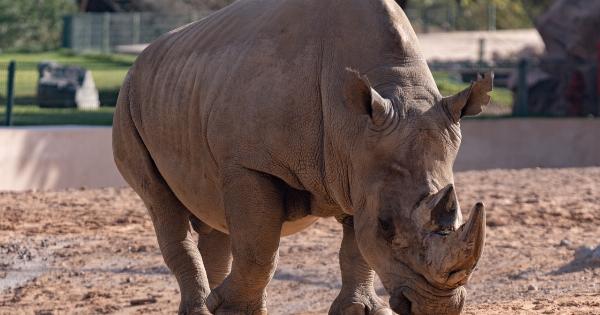Rhinos are fascinating creatures that capture the imagination of kids and adults alike. Known for their massive size and unique appearance, rhinoceroses have several interesting characteristics that make them stand out.
In this article, we will explore some captivating facts about rhinos that will surely delight young minds.
1. Rhinoceros Species
There are five different species of rhinos found across the world, namely:.
- The White Rhino
- The Black Rhino
- The Indian Rhino
- The Javan Rhino
- The Sumatran Rhino
2. Rhinos’ Appearance
Rhinos have a distinct appearance with their thick, armor-like skin and a large horn on their snout. They have muscular bodies and massive heads that contribute to their powerful presence.
The horn of a rhinoceros is made up of keratin, similar to our hair and nails.
3. Rhino Habitats
Rhinos can be found in various habitats, including grasslands, savannas, forests, and swamps. Different species of rhinos have adapted to different environments.
For instance, the White Rhino prefers grassy areas, while the Sumatran Rhino inhabits dense rainforests.
4. Rhinos’ Diet
Most rhinoceroses are herbivores, meaning they eat plants. They have a particular liking for grass, leaves, shoots, fruits, and vegetables. Rhinos are known to have a strong sense of smell that helps them locate their food.
5. Rhinos’ Social Behavior
Rhinos can be quite solitary animals, but some species, like the White Rhino, live in small groups called “crashes.” These groups consist of one adult male, several females, and their young ones.
Rhinos communicate through various vocalizations, such as snorts, grunts, and roars.
6. Rhino’s Horn
Rhinos’ horns are one of their most striking features. The horn’s primary function is defense against predators, but it is also used during territorial fights or courtship rituals.
Unfortunately, rhinos are heavily poached for their horns, resulting in a serious threat to their survival.
7. Rhinos and Wallowing
Have you ever seen a rhino rolling around in the mud? This is called wallowing and serves multiple purposes for them. Wallowing helps rhinos cool down in hot weather, protects their skin from the sun and insects, and even aids in healing wounds.
8. Rhino Calves
A baby rhino is called a calf and is usually born after a gestation period of around 15 to 16 months. These adorable little ones stay close to their mothers and are nursed for several months.
They can start venturing out on their own after a couple of years.
9. Rhinos and their Size
Rhinoceroses are gigantic creatures! They can grow to different sizes depending on the species. The White Rhino is the largest, weighing up to 2.5 to 3.5 tons and measuring about 12 to 13 feet in length.
On the other hand, the Sumatran Rhino is the smallest, weighing around 0.7 to 1.4 tons and measuring about 8 to 10 feet.
10. Efforts for Rhino Conservation
Rhinos are considered a critically endangered species, which means they are at a high risk of extinction. However, there are numerous conservation efforts in place to protect these magnificent animals.
National parks, wildlife reserves, and anti-poaching initiatives work relentlessly to safeguard their habitats and combat illegal hunting.
Conclusion
Rhinos are incredible creatures with unique qualities that make them an important part of our planet’s biodiversity.
It is crucial to raise awareness about their conservation, as every effort counts in ensuring their survival for generations to come.






























